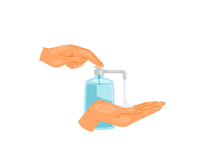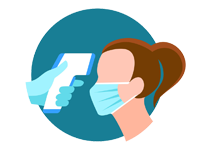Tenoxicam
Uses of Tenoxicam
- Management of pain and inflammation in osteoarthritis
- Treatment of rheumatoid arthritis
- Relief of musculoskeletal pain, such as back pain
- Alleviation of pain following surgery or injury
- Treatment of ankylosing spondylitis and other inflammatory conditions
How Tenoxicam Works
Tenoxicam works by blocking the activity of cyclooxygenase (COX), an enzyme involved in the production of prostaglandins. Prostaglandins are responsible for causing inflammation, pain, and fever in the body. By inhibiting COX, Tenoxicam helps reduce the levels of these chemicals, thereby alleviating pain, swelling, and inflammation associated with various conditions. This makes it an effective treatment for chronic inflammatory diseases and acute pain.
Benefits of Tenoxicam
- Reduces inflammation and swelling
- Provides effective pain relief for conditions like osteoarthritis and rheumatoid arthritis
- Helps manage chronic pain and discomfort
- Offers long-lasting relief with a once-daily dosing schedule
- Improves mobility and quality of life in patients with joint disorders
How to Take Tenoxicam
Tenoxicam is typically taken orally as a tablet once daily, preferably at the same time each day, with or without food. The dosage depends on the condition being treated, the severity of the pain, and the patient `s overall health. It is important not to exceed the recommended dosage to minimize the risk of side effects, particularly gastrointestinal issues. Always follow the directions provided by your doctor and take Tenoxicam exactly as prescribed.
Type of Dosage Available
- Tablet
Side Effects of Tenoxicam
- Gastrointestinal issues (nausea, indigestion, ulcers, or bleeding)
- Headache or dizziness
- Rash or allergic reactions
- Kidney dysfunction (rare, particularly with prolonged use)
- Increased risk of cardiovascular events (heart attack, stroke) with long-term use
- Elevated liver enzymes (in rare cases)
Safety Advice
- Use the lowest effective dose for the shortest duration to reduce the risk of side effects
- Monitor kidney and liver function periodically, especially with long-term use
- Avoid taking Tenoxicam with alcohol or other NSAIDs to reduce the risk of gastrointestinal bleeding
- Consult your doctor before using Tenoxicam if you have a history of heart disease, high blood pressure, or kidney problems
- Discontinue use and seek medical attention if you experience symptoms of an allergic reaction, such as rash or swelling
Frequently Asked Questions (FAQs)
Q: What is Tenoxicam used for?
A: Tenoxicam is used to treat pain and inflammation associated with conditions like osteoarthritis, rheumatoid arthritis, and musculoskeletal pain.
Q: How should I take Tenoxicam?
A: Take Tenoxicam exactly as prescribed by your doctor, typically as a once-daily tablet, with or without food.
Q: Can Tenoxicam cause side effects?
A: Yes, common side effects include gastrointestinal discomfort, headache, and dizziness. Serious side effects like kidney problems and allergic reactions are rare but require immediate medical attention.
Q: Can I take Tenoxicam with other medications?
A: Always inform your doctor about other medications you are taking, especially blood thinners, other NSAIDs, or medications for heart conditions, as these may interact with Tenoxicam.
Q: Is Tenoxicam safe during pregnancy?
A: Consult your doctor before using Tenoxicam during pregnancy, especially in the third trimester, as it may not be recommended for pregnant women.
Medicine Not Available for Tenoxicam
Uses of Tenoxicam
- Management of pain and inflammation in osteoarthritis
- Treatment of rheumatoid arthritis
- Relief of musculoskeletal pain, such as back pain
- Alleviation of pain following surgery or injury
- Treatment of ankylosing spondylitis and other inflammatory conditions
How Tenoxicam Works
Tenoxicam works by blocking the activity of cyclooxygenase (COX), an enzyme involved in the production of prostaglandins. Prostaglandins are responsible for causing inflammation, pain, and fever in the body. By inhibiting COX, Tenoxicam helps reduce the levels of these chemicals, thereby alleviating pain, swelling, and inflammation associated with various conditions. This makes it an effective treatment for chronic inflammatory diseases and acute pain.
Benefits of Tenoxicam
- Reduces inflammation and swelling
- Provides effective pain relief for conditions like osteoarthritis and rheumatoid arthritis
- Helps manage chronic pain and discomfort
- Offers long-lasting relief with a once-daily dosing schedule
- Improves mobility and quality of life in patients with joint disorders
How to Take Tenoxicam
Tenoxicam is typically taken orally as a tablet once daily, preferably at the same time each day, with or without food. The dosage depends on the condition being treated, the severity of the pain, and the patient `s overall health. It is important not to exceed the recommended dosage to minimize the risk of side effects, particularly gastrointestinal issues. Always follow the directions provided by your doctor and take Tenoxicam exactly as prescribed.
Type of Dosage Available
- Tablet
Side Effects of Tenoxicam
- Gastrointestinal issues (nausea, indigestion, ulcers, or bleeding)
- Headache or dizziness
- Rash or allergic reactions
- Kidney dysfunction (rare, particularly with prolonged use)
- Increased risk of cardiovascular events (heart attack, stroke) with long-term use
- Elevated liver enzymes (in rare cases)
Safety Advice
- Use the lowest effective dose for the shortest duration to reduce the risk of side effects
- Monitor kidney and liver function periodically, especially with long-term use
- Avoid taking Tenoxicam with alcohol or other NSAIDs to reduce the risk of gastrointestinal bleeding
- Consult your doctor before using Tenoxicam if you have a history of heart disease, high blood pressure, or kidney problems
- Discontinue use and seek medical attention if you experience symptoms of an allergic reaction, such as rash or swelling
Frequently Asked Questions (FAQs)
Q: What is Tenoxicam used for?
A: Tenoxicam is used to treat pain and inflammation associated with conditions like osteoarthritis, rheumatoid arthritis, and musculoskeletal pain.
Q: How should I take Tenoxicam?
A: Take Tenoxicam exactly as prescribed by your doctor, typically as a once-daily tablet, with or without food.
Q: Can Tenoxicam cause side effects?
A: Yes, common side effects include gastrointestinal discomfort, headache, and dizziness. Serious side effects like kidney problems and allergic reactions are rare but require immediate medical attention.
Q: Can I take Tenoxicam with other medications?
A: Always inform your doctor about other medications you are taking, especially blood thinners, other NSAIDs, or medications for heart conditions, as these may interact with Tenoxicam.
Q: Is Tenoxicam safe during pregnancy?
A: Consult your doctor before using Tenoxicam during pregnancy, especially in the third trimester, as it may not be recommended for pregnant women.
Download India's most affordable pharmacy app
- Compare with medicine prices
- Save upto 90% on your medicine bills

Temperature Controlled storage and delivery

Regular Sanitization

Disinfected Packaging









 Added!
Added!